


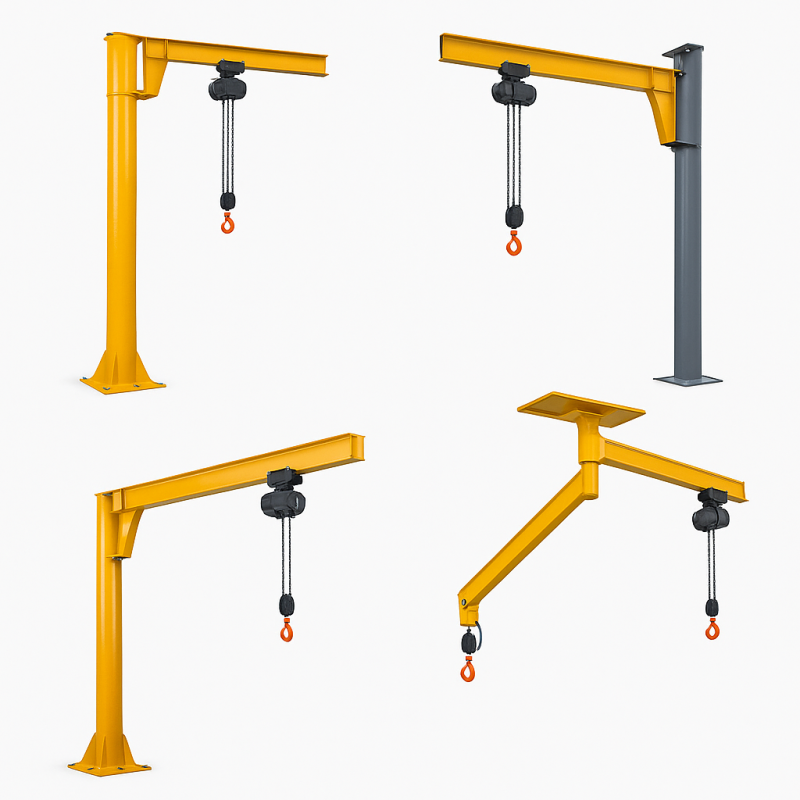
Among the most versatile lifting tools are jib cranes—known for their simplicity and localized lifting capabilities. However, with the rise of automated lifting systems incorporating robotics, remote control, and IoT integration, many businesses face the challenge of deciding which solution fits their unique requirements.
This article dives deep into comparing jib cranes—including freestanding jib cranes, wall mounted jib cranes, ceiling mounted jib cranes, articulating jib cranes, and pillar jib cranes—with modern automated lifting solutions. We’ll explore functionality, cost, installation, scalability, and operational fit to help you make an informed decision.
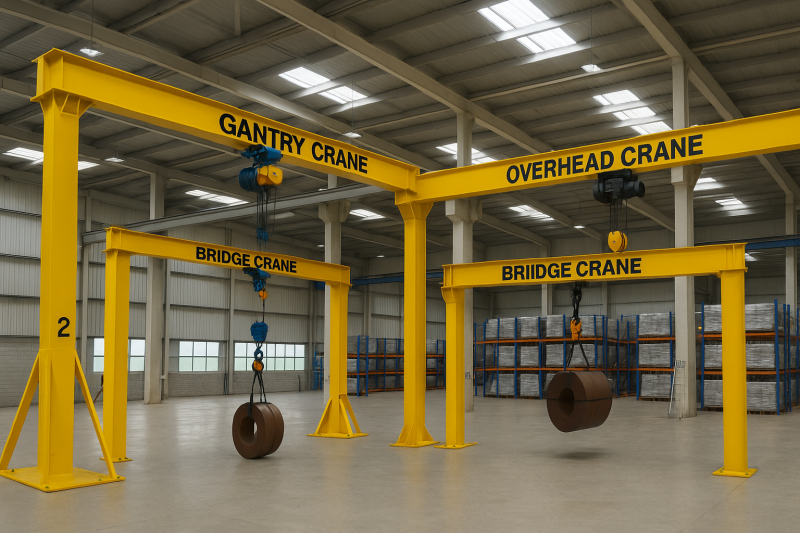
Jib cranes are compact lifting devices where a horizontal arm or boom supports a hoist and trolley that move loads within a limited radius. Their design allows rotation around a fixed pivot point, ranging from 180° to full 360°, depending on the type.
The five main types of jib cranes are:
For detailed specifications, visit The specification of Jib Cranes.
Automated lifting systems integrate advanced technologies such as programmable logic controllers (PLCs), robotics, IoT sensors, and remote operation to handle materials with minimal human intervention. Examples include:
These systems prioritize precision, speed, and integration with broader smart manufacturing initiatives.
| Aspect | Jib Cranes | Automated Lifting Systems |
|---|---|---|
| Coverage Area | Localized workstations; radius limited to jib length | Facility-wide coverage with multi-axis movement |
| Installation Cost & Time | Lower upfront cost; quicker installation (especially wall/ceiling-mounted) | High initial investment; longer setup and programming time |
| Operational Complexity | Simple manual or semi-powered operation | Requires programming, monitoring, and technical support |
| Flexibility | Easily moved or repurposed; adjustable for specific tasks | Fixed routes or programmed tasks; less adaptable |
| Load Capacity | Varies by type; freestanding cranes handle heavy loads | Generally supports heavier loads with automated precision |
| Safety | Requires trained operators; manual oversight | Enhanced safety via automation and sensors |
| Maintenance | Mechanical parts easier to service | Complex systems require specialized maintenance |
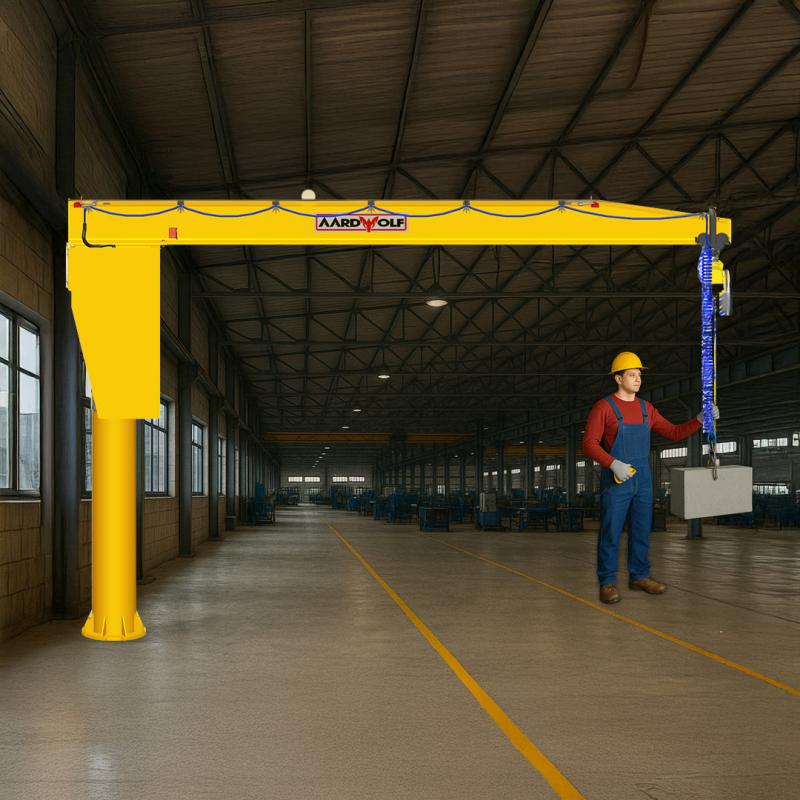
These are robust, foundation-mounted cranes with full circular coverage, ideal for outdoor docks and large warehouses. Their self-supporting structure eliminates the need for building integration, enabling fast installation and high load capacity.
Fixed to building walls or columns, these cranes are perfect for small footprint operations, such as assembly lines or machine loading bays. Their 180°–200° rotation offers sufficient range without compromising space.
Discover more about their utility at What is a Wall-mounted Jib Crane?.
Suspended from overhead structures, these cranes free up valuable floor space, supporting lean manufacturing and cleanroom environments.
Featuring dual rotating arms, articulating cranes excel in cluttered or obstructed workspaces, providing precise load placement around machinery and equipment.
See foundation options and mounting at Jib Cranes Foundation to your warehouse.
Compact and column-mounted, pillar cranes are excellent for moderate load lifting near machines or within maintenance workshops.
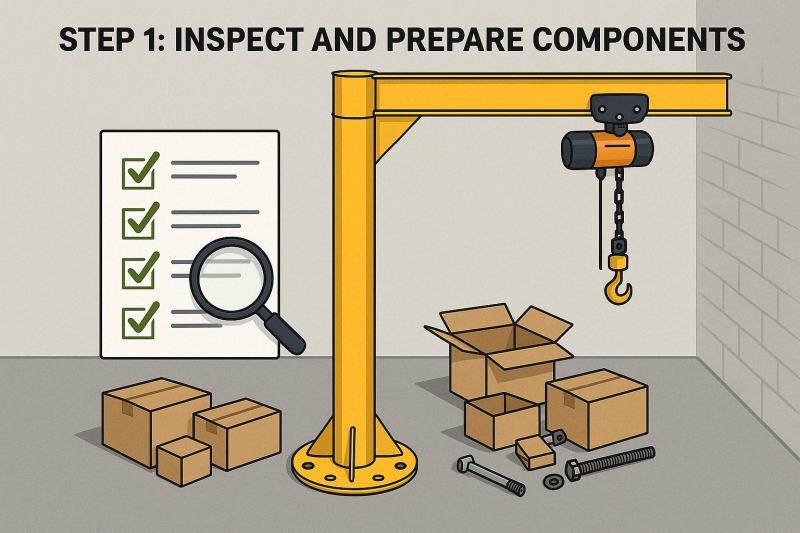
Many modern facilities combine jib cranes with automated systems to leverage the benefits of both. Jib cranes handle detailed, close-range lifting tasks, while automated cranes manage bulk material transport.
For operational insights and implementation strategies, explore How to apply Jib Cranes and Benefits of Smart Jib Crane Operations.
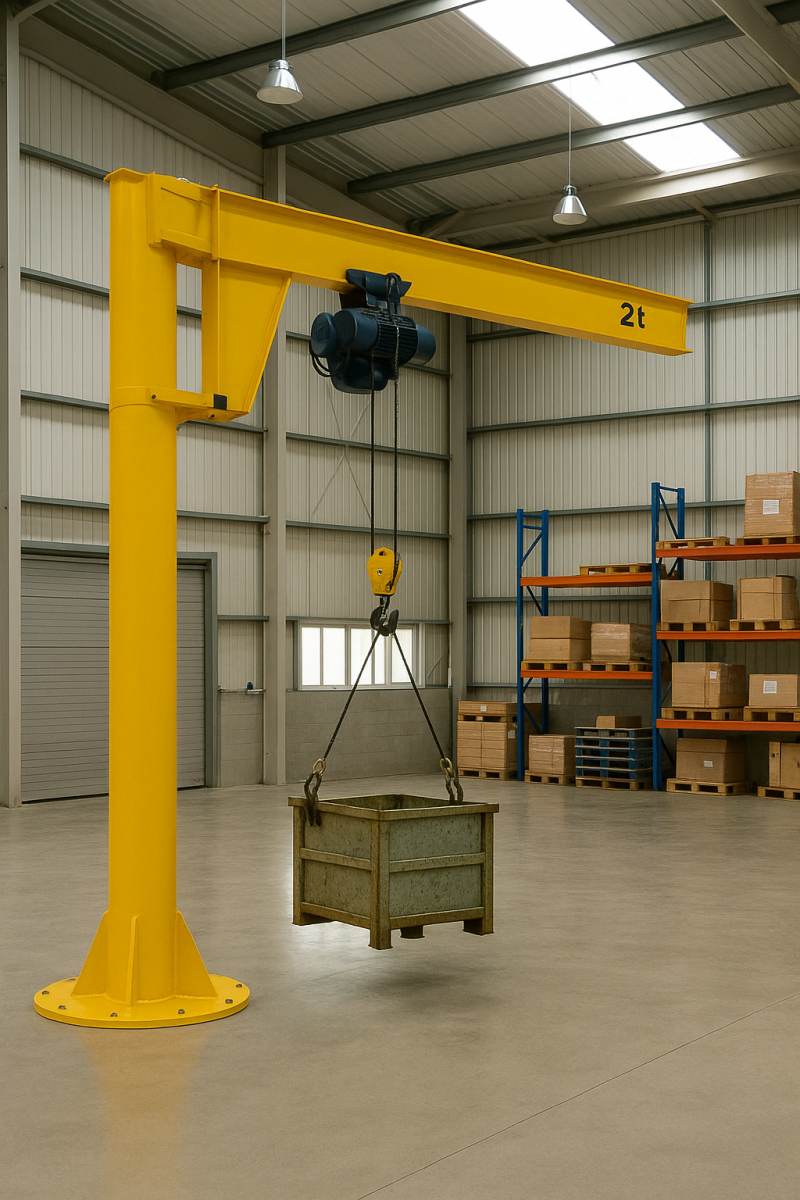
Choosing between jib cranes and automated lifting systems depends on your operational scale, budget, workspace, and automation readiness. While jib cranes offer cost-effective, flexible lifting solutions for defined areas, automated systems provide comprehensive, scalable lifting with advanced controls.
Evaluate your needs thoroughly, and consider hybrid approaches that maximize productivity and safety. For more detailed information on jib crane types and their integration, visit Jib Cranes.
References
1. How to operate a Jib Cranes safely
3. Over brace jib crane wall mounted
5. Is a Jib Crane a Gantry Crane
6. Articulated Jib Crane Wall Mounted
8. Manual Counterbalance Crane
10. Over Braced Jib Crane Column Mounted
11. Powered counterbalance Crane
Sign up to receive the latest info on new Aardwolf products, special offers and more.
By signing up you agree to receive emails from Aardwolf with news, special offers, promotions and other information. You can unsubscribe at any time.